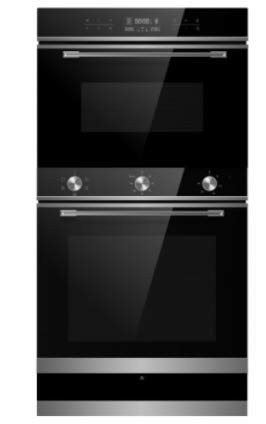The Most Prevalent Issues In Oven And Hob
The Complete Guide to Ovens and Hobs: Choosing the Right Appliances for Your Kitchen
When it concerns developing culinary work of arts, the significance of quality kitchen devices can not be overemphasized. Ovens and hobs are the heart of any kitchen, allowing home cooks and expert chefs alike to develop, bake, and sauté scrumptious meals. Comprehending the various types of ovens and hobs, along with their functions and functionalities, is vital for making informed acquiring choices. This article uses a thorough take a look at ovens and hobs, helping you browse the choices readily available so that you can improve your kitchen's effectiveness and adaptability.
Understanding Ovens
Ovens are vital for cooking and baking and been available in numerous types to meet varied cooking requirements. Here is an overview of the most common types of ovens:
1. Standard Ovens
Traditional ovens work by warming the air inside with gas or electric aspects. They are ideal for baking cakes, roasting meats, and cooking casseroles.
2. Convection Ovens
These ovens use a fan to distribute hot air, offering an even temperature throughout, which can substantially lower cooking times. They are ideal for baking cookies or roasting veggies.
3. Microwave Ovens
Microwaves prepare food quickly utilizing electro-magnetic radiation. They are perfect for reheating leftovers or defrosting frozen foods but are not ideal for browning or crisping.
4. Wall Ovens
Including a wall oven into your kitchen style can save area and create a streamlined visual. They function just like traditional or stoves but are built into the wall for simple gain access to.
5. Variety Ovens
These ovens integrate stovetop burners with an oven, providing adaptability for those who prefer a single home appliance for all cooking needs.
Type
Cooking Method
Best For
Standard
Electric/Gas
Baking, roasting
Convection
Air circulation
Quick cooking, even baking
Microwave
Electro-magnetic
Reheating, defrosting
Wall Ovens
Electric/Gas
Space-saving, smooth design
Range Ovens
Electric/Gas
Flexible cooking
Checking out Hobs
Hobs, also referred to as cooktops or stovetops, offer the surface to prepare pans directly over a heat source. Like ovens, hobs come in numerous types, which can be categorized as follows:
1. Gas Hobs
These hobs utilize a flame for cooking and offer immediate heat control. They are preferred by numerous chefs for their responsiveness and precision.
2. Electric Hobs
Electric hobs utilize coils or flat surface areas to heat pans. They use a consistent heat source, however they might take longer to cool down compared to gas hobs.
3. Induction Hobs
Induction hobs utilize electro-magnetic energy to heat pots and pans straight, making them highly efficient and much faster to prepare. They are also much easier to clean as the surface stays fairly cool.
4. Solid Plate Hobs
These are older technology that utilizes solid metal plates to offer heat. They are resilient however are less effective than modern-day options.
Type
Heat Source
Benefits
Downsides
Gas Hobs
Flame
Immediate heat control
Needs gas connection
Electric Hobs
Electric coils
Consistent heat
Slower to cool off
Induction Hobs
Electro-magnetic
Fast cooking, energy-efficient
Needs compatible pots and pans
Strong Plate Hobs
Strong metal plate
Durability
Less effective
Choosing the Right Appliances
Selecting the perfect oven and hob for your kitchen involves considering numerous factors:
1. Space and Layout
Step your kitchen area to identify the size and positioning of the oven and hob. Ensure there is appropriate ventilation, specifically for gas appliances.
2. Cooking Style
Think about how often you prepare and the type of meals you prepare. A convection oven may fit passionate bakers, while somebody who regularly stir-fries might choose an induction hob.
3. Energy Source
Select the energy source that best fits your way of life. Gas provides immediate control, while electric and induction hobs provide ease of usage and are often more energy-efficient.
4. Budget
Determine your spending plan for kitchen appliances. Ovens and hobs vary substantially in rate, depending on features and brand names. Prioritize important functions that fulfill your needs.
5. Functions
Search for performances such as self-cleaning options, smart innovation compatibility, particular rack setups for ovens, and safety functions for hobs.
Regularly Asked Questions (FAQs)
Q1: What is the difference in between a standard oven and a convection oven?A1: Conventional ovens warm the air within without fans, while convection ovens use a fan to flow hot air for more even cooking. Q2: Can I utilize aluminum pots and pans on induction hobs?A2: No, induction hobs require ferrous (magnetic )materials like cast iron or stainless steel to work successfully. Q3: Do gas hobs heat much faster than electric hobs?A3: Yes, gas hobs offer instant heat, making them faster for cooking compared to electric hobs. Q4: Is it safe to use a microwave oven?A4: Yes, when utilized according to the maker's guidelines, microwave are considered safe for food preparation.
Q5: How often need to I clean my oven and hob? Ovens And Hobs : For optimal performance, clean your oven frequently, especially after spills. Hobs should be cleaned down after each usage
to avoid buildup. Ovens and hobs
are essential elements of a fully equipped kitchen. Understanding the numerous types, their performances, and the factors to consider associated with buying
them can considerably boost cooking experiences. Whether one is a casual home cook or an expert chef, investing time in choosing the best appliances can lead to culinary success and satisfaction in the kitchen. By focusing on functions that align with your cooking design, energy sources that fit your home, and budget plan factors to consider, you can develop an efficient workspace that inspires culinary imagination. 